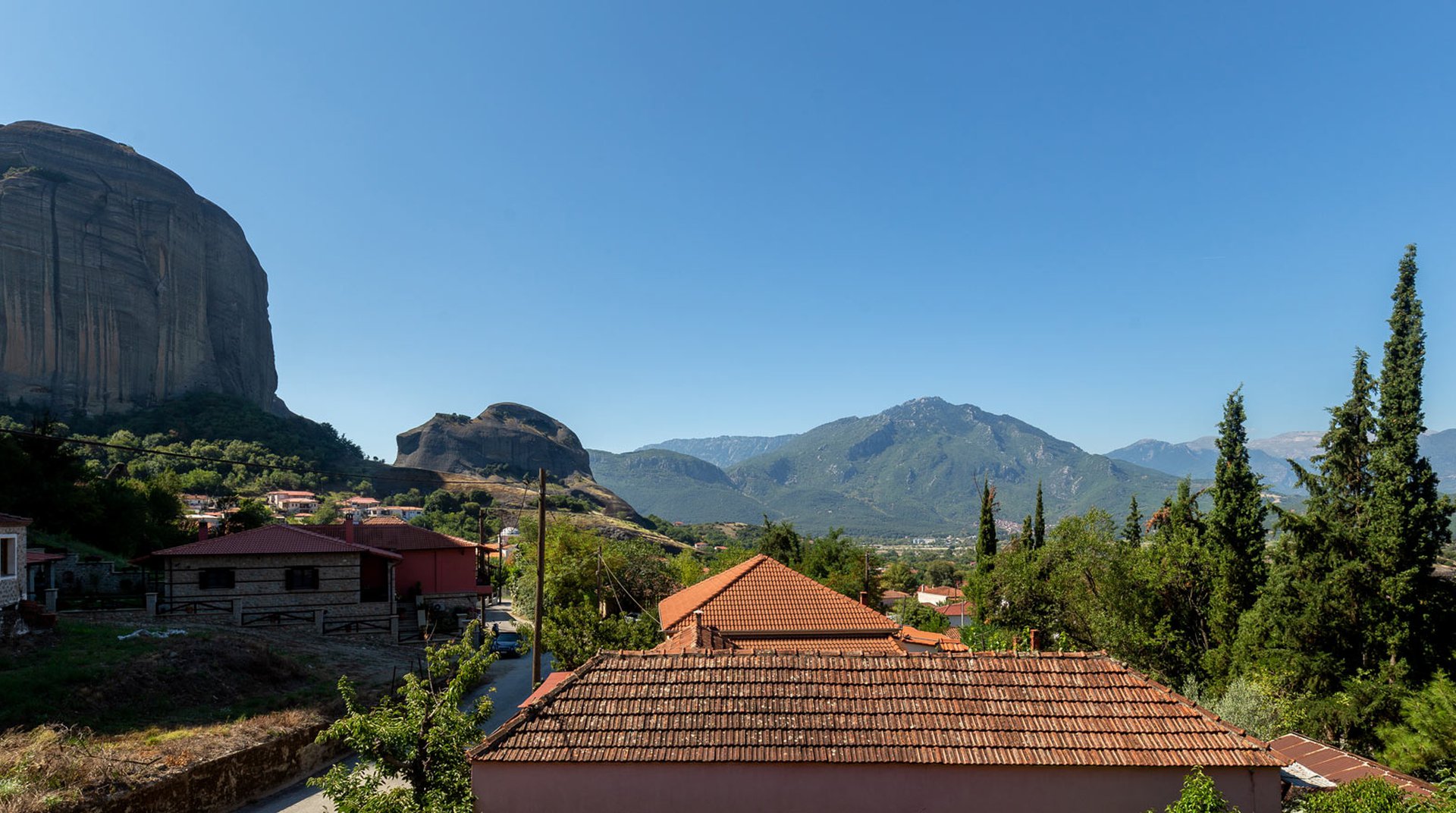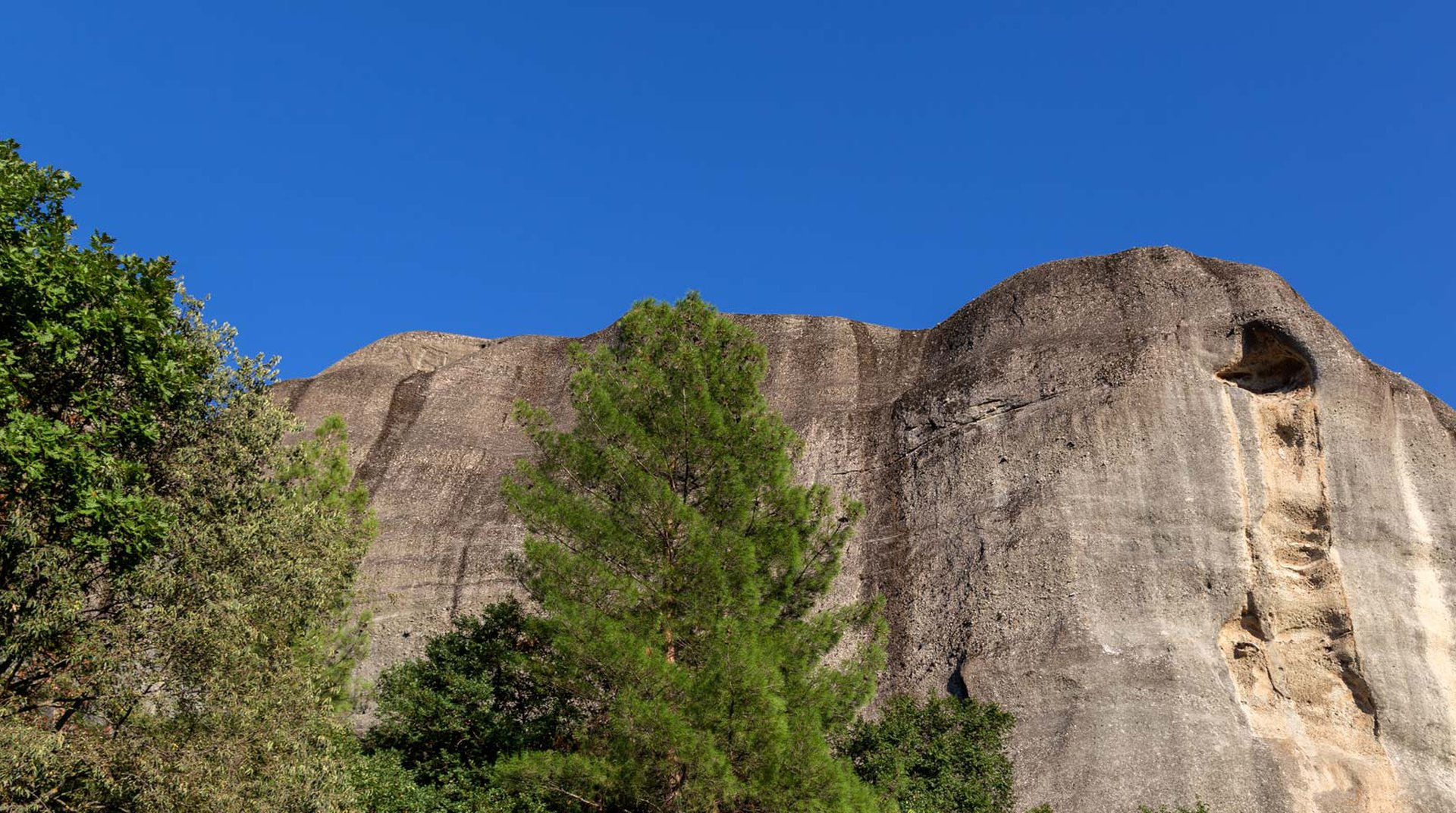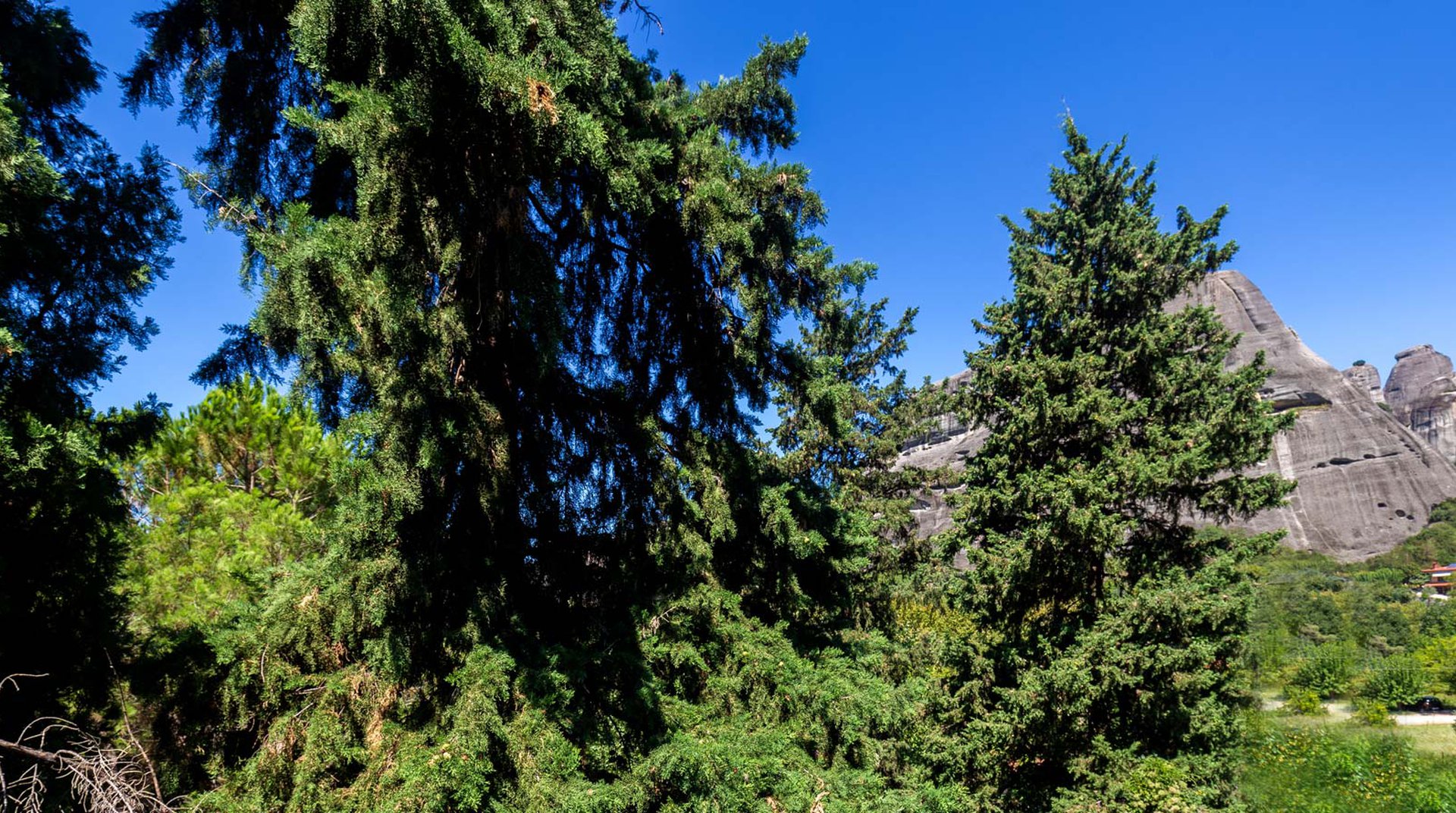Location
Just a few kilometers from Kalambaka, heading to Meteora, lies the charming historic settlement of Kastraki. Built at the foot of the majestic rocks, it is the area’s jewel as it combines the charm of green nature with the eerie beauty of the “Sacred Rocks”.
Having San Giorgio Villa as a base, explore the unique landscape that harmoniously combines the wild and, at the same time, charming beauty of the steep cliffs and the plateaus with the serene refreshing beauty of the lush forest.
Visit Meteora, a masterpiece of nature, a unique geological phenomenon, and a divine spectacle, where the monasteries look like natural endings of the theories “Sacred Rocks”, carriers of a history lost in the distant past. Take a tour of beautiful Kalambaka, wander the old town and get to know its museums and attractions.
Take the opportunity to participate in one of the organized excursions offered and to visit the city of Trikala or Lake Plastiras. If you are a fan of extreme sports, do not miss the opportunity to participate in one of the activities offered, such as climbing and paragliding.
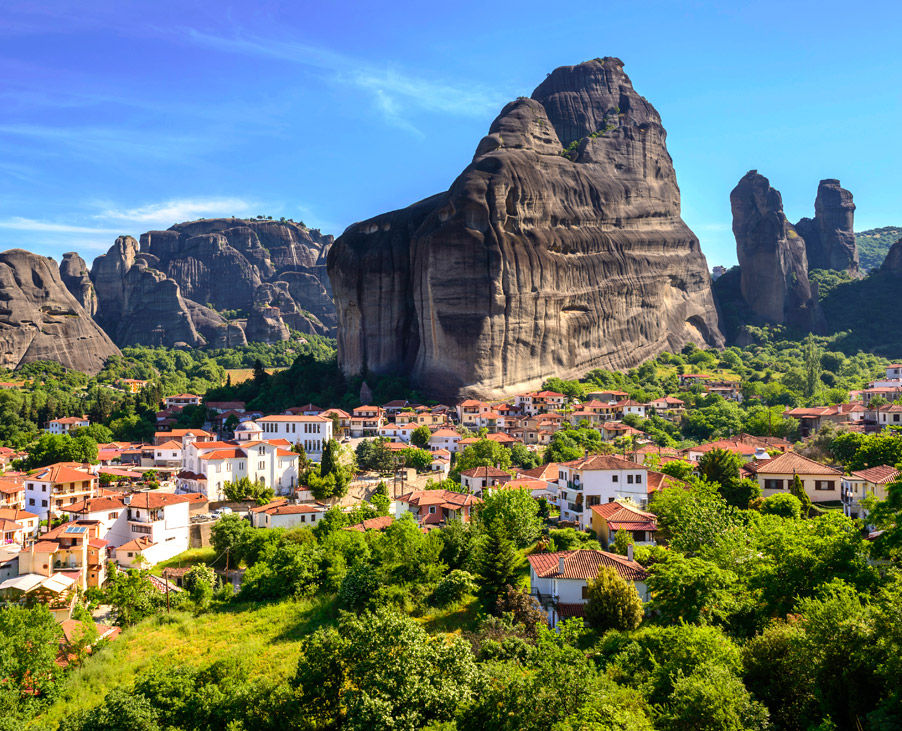
Kastraki
Heading from Kalambaka to Meteora, through a dense green route, you will find yourselves in Kastraki, a picturesque traditional settlement built at the foot of the imposing rocks of Meteora. The majestic rocks and the sanctity of the monasteries harmoniously combine with the tradition and the rich vegetation, creating a mysterious, solemn atmosphere.
The name of the settlement came from a Byzantine castle located on the site, the ruins of which survived to this day and was created during the Ottoman rule by the unification of small settlements of Epirus who took refuge in this area to escape from the notorious oppressor of Ioannina, Ali Pasha.
A tour of the old, preserved settlement is a journey into history and tradition where the well-preserved stone mansions and their crimson tiled roofs, narrow streets, and ancient churches revive the traditional neighborhoods of a bygone era. The central square of the settlement, Mesochori as it is called, divides the settlement as before in its northern and southern parts, with the Museum of Geological History of Meteora dominating on its north side.
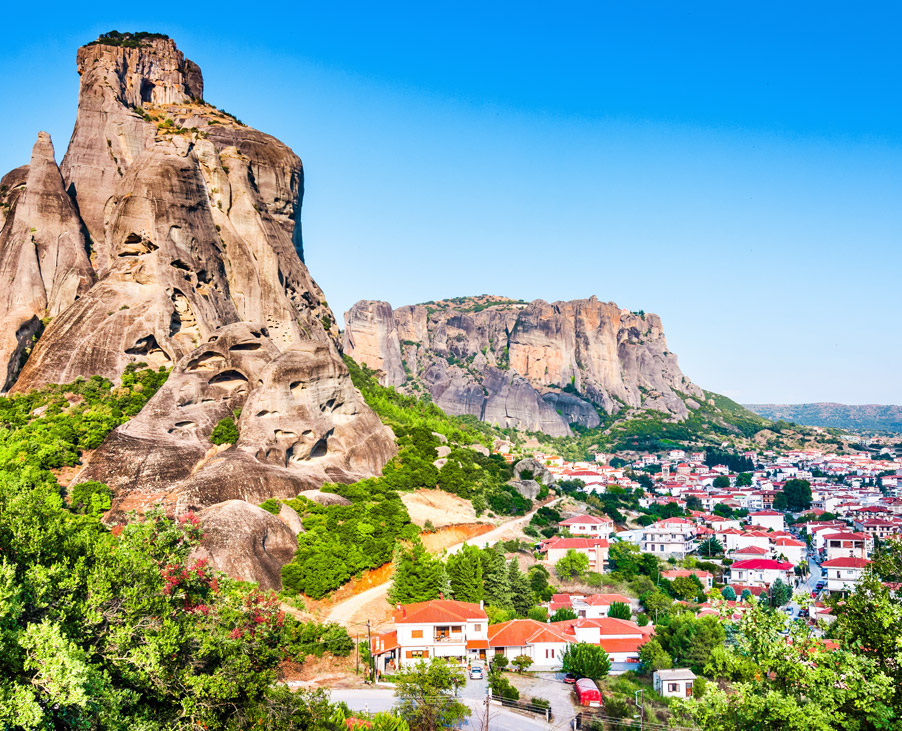
Kalambaka
The city of Kalambaka, built at the foot of the rocks of Meteora, on the left bank of Pineios river, surrounded by lush forests, is a popular destination with visitors from all over the world flocking to admire the unique geological phenomenon and feel the serenity and sanctity exuded by the monasteries that stand proudly like natural ends at the tops of the “Sacred Rocks”.
World-famous for its monasteries, Kalambaka dates back centuries of history as the reports start from ancient times with the name Aiginion; the name Aiginion is evidenced by a wall inscription located in the eastern part of the Church of Agios Ioannis Prodromos, continues in the Middle Ages as Stagoi - the name of the metropolis to this day - to henceforth receive its current name, Kalambaka, a word of Turkish origin meaning “mighty fortress”.
Its strategic location, very close to the villages of Aspropotamos, Hasia, Koziakas, and especially the Monasteries of Meteora, makes it a base for its visitors while at the same time it is distinguished for the solid road planning, large squares, picturesque neighborhoods, and developed tourist infrastructure.
During your tour in Kalambaka, you will find many small temples and chapels of the post-Byzantine era with remarkable hagiographies. One of its most important sights is the Byzantine church of the Assumption of the Virgin Mary, in the northeastern part, with the towering rock of Aias dominating it.
A wandering in the northeastern part of Kalambaka and the picturesque district of Sopot under the rock of the Holy Trinity and the rock of Altsos will enchant you. The city hosts the only wood carving school in Greece, the Diplarios School, where wood carving exhibitions are held.
A short distance from Kalambaka, you can visit the archeological site of Theopetra Cave, the first habitation of which is attested in the Stone Age and contains unique findings of the most important cultural change of human prehistory.
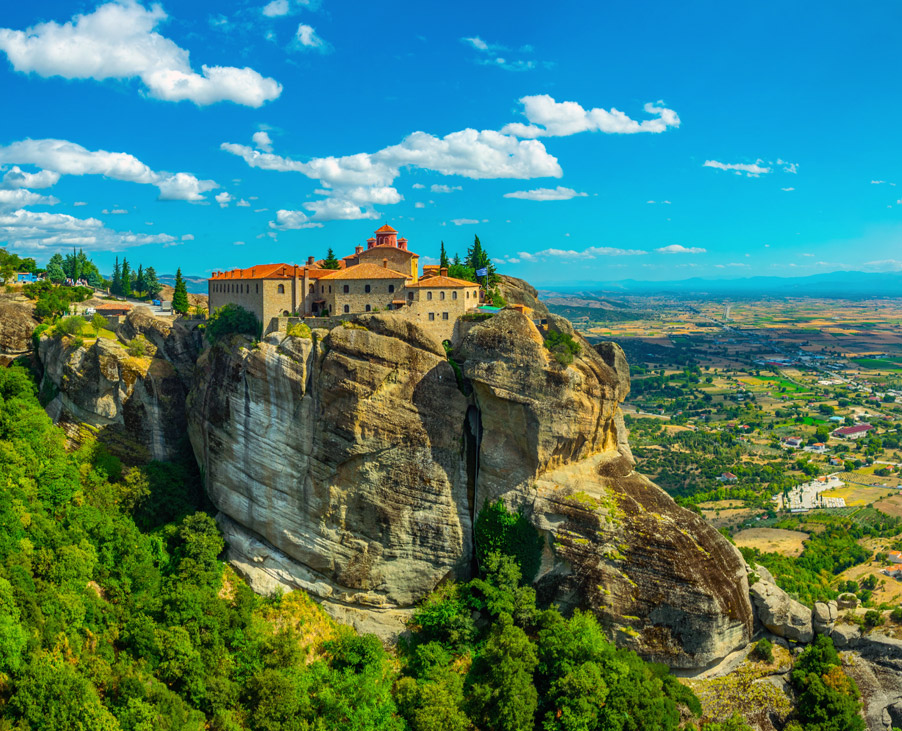
Meteora
Meteora is one of the most critical world monuments protected by UNESCO and designated as a “Preserved and Protected Monument of Humanity”. After Mount Athos, it is the second most remarkable monastery center in Greece.
A refuge for many hermits who sought peace of mind and tranquility, away from the turbulent daily life, Meteora offered the opportunity to isolate themselves and pray for the world’s salvation in the small chapels that initially existed in the area. In the surviving sources of the Byzantine period, testimonies mention Barnabas, the first ascetic, around 950-970 AD, who founded the Hermitage of the Holy Spirit. This was followed by the founding of the Transfiguration Hermitage by the Cretan monk Andronikos at the beginning of 1000 AD and the founding of the Hermitage of Stagoi or Doupiani around 1150-1160 AD
After about two hundred years, in the middle of the 14th century, the Great Meteoron Holy Monastery of the Transfiguration of the Saviour was founded by Saint Athanasios, who gave the rock the name Meteoro, a name that was established for the whole region. Over the centuries, twenty-four more sacred monasteries were created over about two centuries, a period of great prosperity of monasticism.
The ascent to the monasteries used to be difficult as it was done with scaffolding or nets and later with rope ladders. Today, visitors use the stairs carved into the rocks to ensure their safety and comfortable ascent to the monasteries.
Six are in operation out of the twenty-four monasteries, the Holy Monasteries of the Transfiguration of the Saviour, the Holy Trinity, Saint Nicholas of Anapafsas, and Varlaam, which are for men, as well as the Holy Monasteries of Roussanou and Saint Stephen, which are for women. The remaining fifteen monasteries are uninhabited and in ruins.
